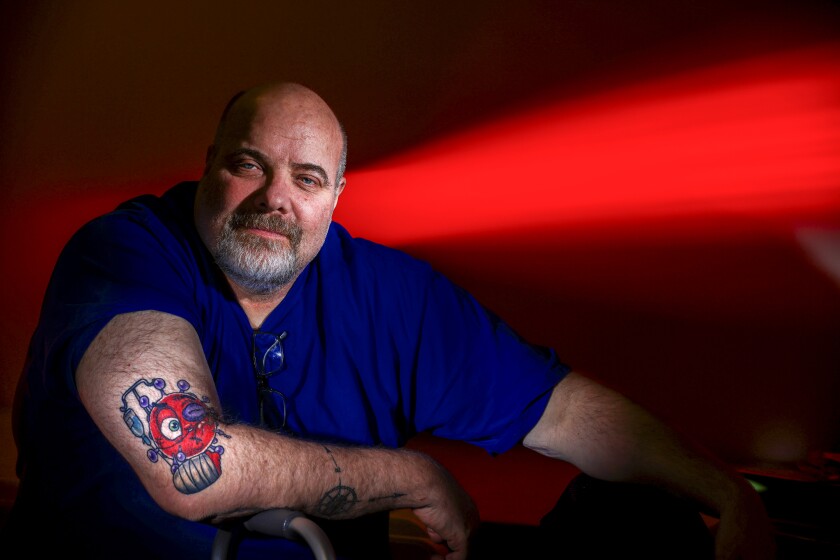DULUTH — Dean Moore contracted COVID-19 in 2020. Since his nearly monthlong hospitalization, the 53-year-old Duluthian has had two heart attacks and suffers from ongoing neurological problems, which he attributes to the virus.
When his body was up for it, Moore decided to get a permanent reminder of what he survived.
ADVERTISEMENT
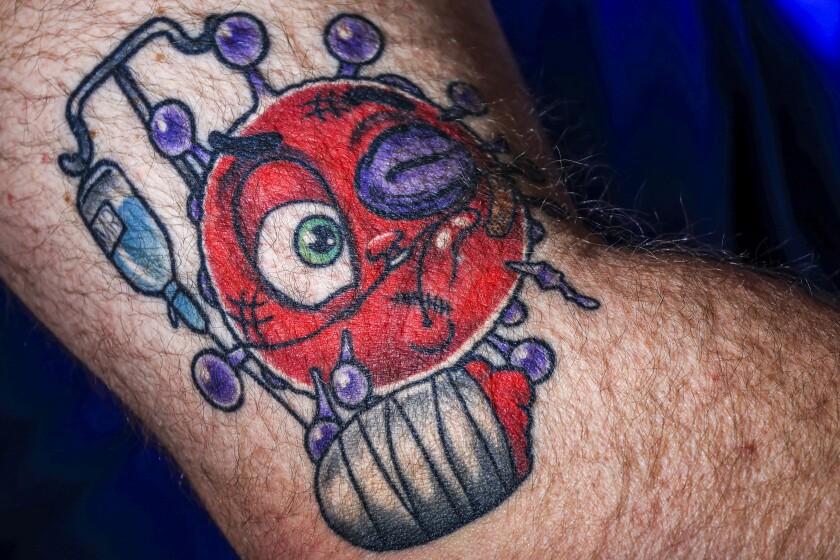
“I process the bad things in life with humor,” he said. “I came up with the idea of a COVID molecule with full color — and I won, so I beat it up. I gave it a black eye. … It’s on oxygen.
“I took a lighter approach,” he continued.
While getting flesh punctured in close quarters won’t top many a pandemic to-do list, most Northland tattoo shops reopened after the shutdown to an ever-growing waitlist of wannabe clients itching to get inked.
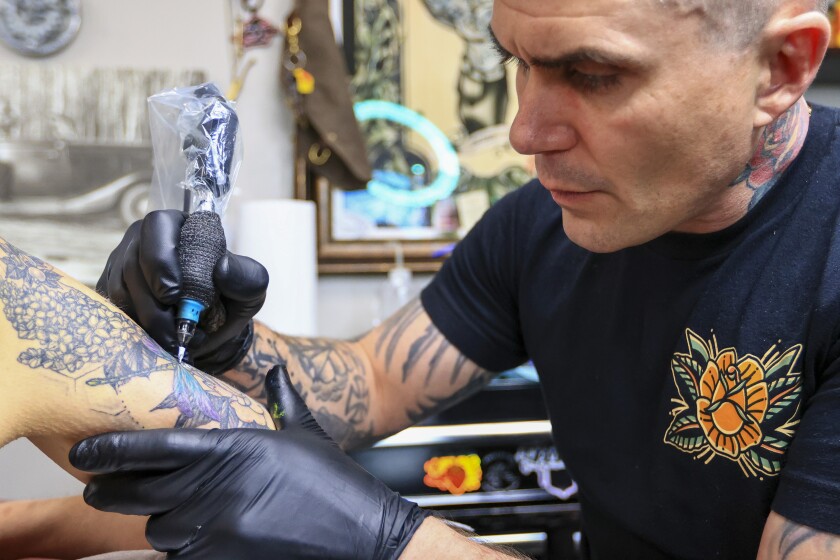
And that’s true across the country; 50% of Americans have at least one. Nearly 30,000 artists work in the U.S. tattoo industry, which is projected to generate a $1.4 billion revenue in 2022, according to IBISWorld data.
In the Northland, though, some shops closed for good, others expanded and many area artists reported mixed blessings from the mandated break. True North is still operating in Cloquet, as is Saginaw’s Mad Tatter Studio. and are holding it down in Superior.
And in Duluth, you can find shops in nearly every neighborhood: downtown, on Miller Hill, in Chester Park, in East Hillside, in Lincoln Park.
In West Duluth, opened in June 2021, and expanded space, and staff, after a move to Canal Park.
ADVERTISEMENT
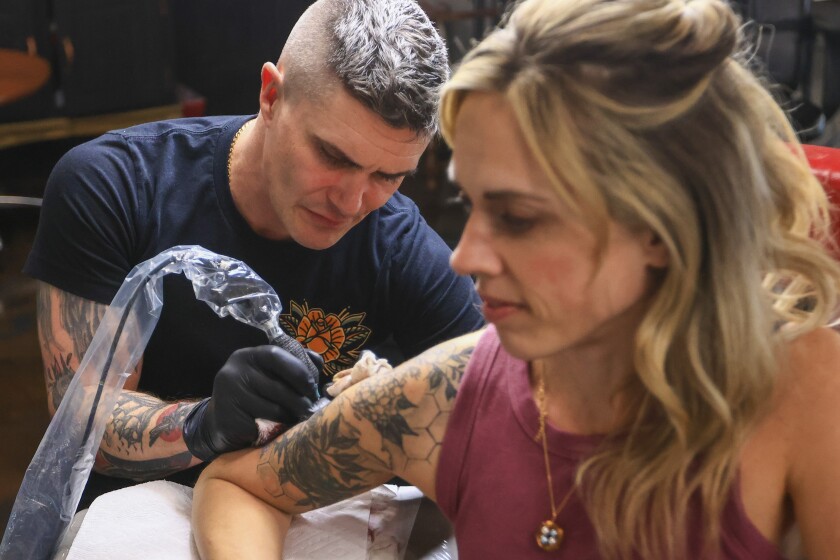
The pain and challenge of being tattooed is not a comfortable process, but it’s often a very welcome distraction when life is in a turbulent season, said Living Art owner Chris Owen. This could be why the business has enjoyed an upturn. In every crisis, there’s opportunity, he added.
Landing their high-tourist location would have been difficult in any other circumstances, and the mandated closing was a much-needed breather for Owen, who used the time to rest and update the shop’s online presence and digital functions.
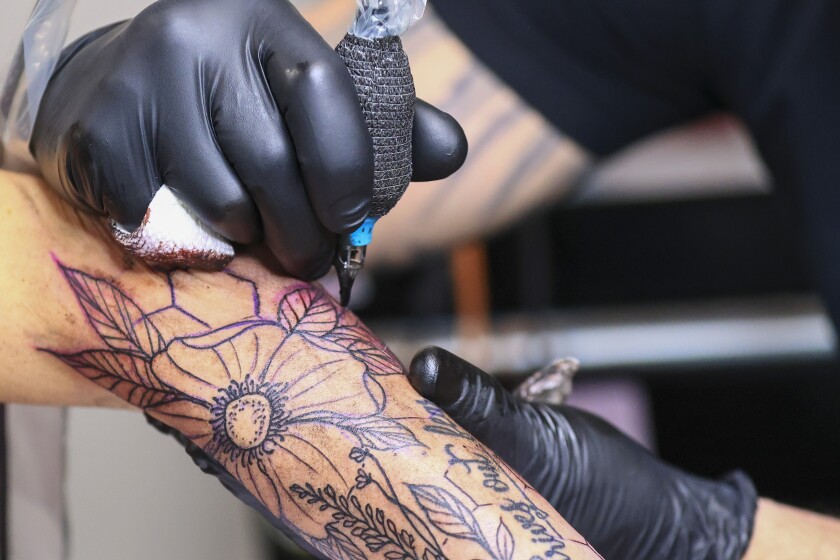
It took about four months to build out their new space on Canal Park Drive. Owen added staff, piercing, laser removal and microblading services, and when they reopened in October 2021, they were overwhelmed by the demand for tattoos and the shop’s rescheduling needs.
In many ways, they still are.
“They're waiting for us to get a hold of them like they’re waiting to get a liver,” Owen said. “That’s a lot of pressure to get people taken care of sooner rather than later in my industry. Is it essential? No, but is it highly in demand and something that people will continue to spend money on regardless of whatever else is going on.”
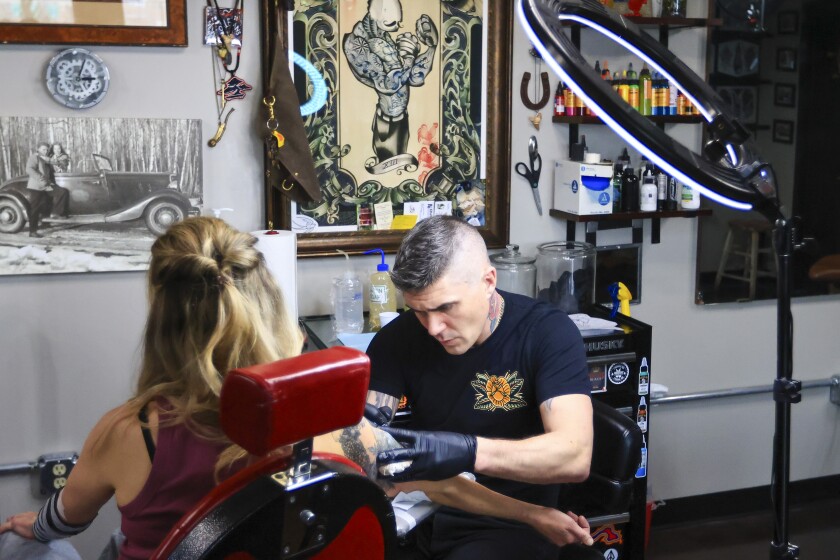
At Living Art, the artists tattoo 400-500 clients a month. Along with the usual-suspect ideas, people are getting memorial tats, pandemic-inspired pieces and loved ones’ handwriting. Overall, if their body art is any indication, ultimately, people are hopeful, Owen said.
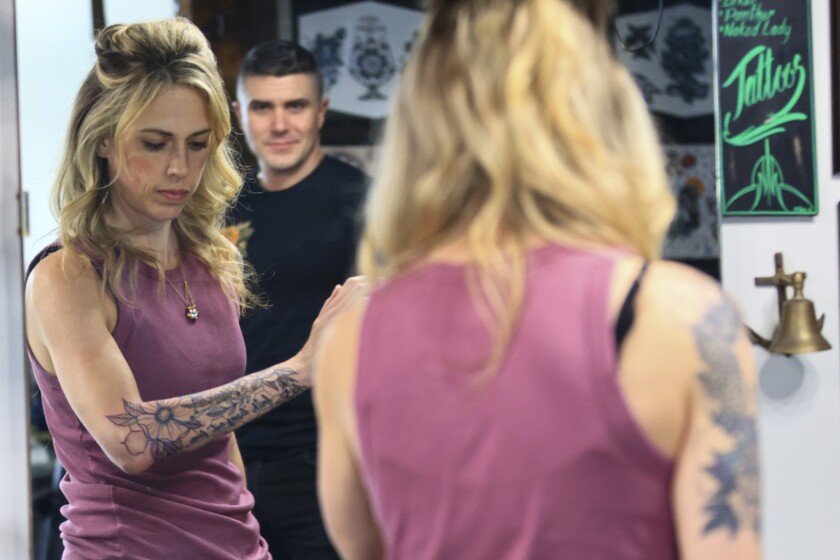
The owners of Superior’s INK Tattoo saw many shifts in and out of the shop. Jill Korhonen and Abby Jean Goodell reopened in June 2020 after isolating for two weeks. They staggered their schedules to work alternate days, they switched to appointment-only. They launched a thorough screening process and stopped allowing extra people in the shop.
ADVERTISEMENT
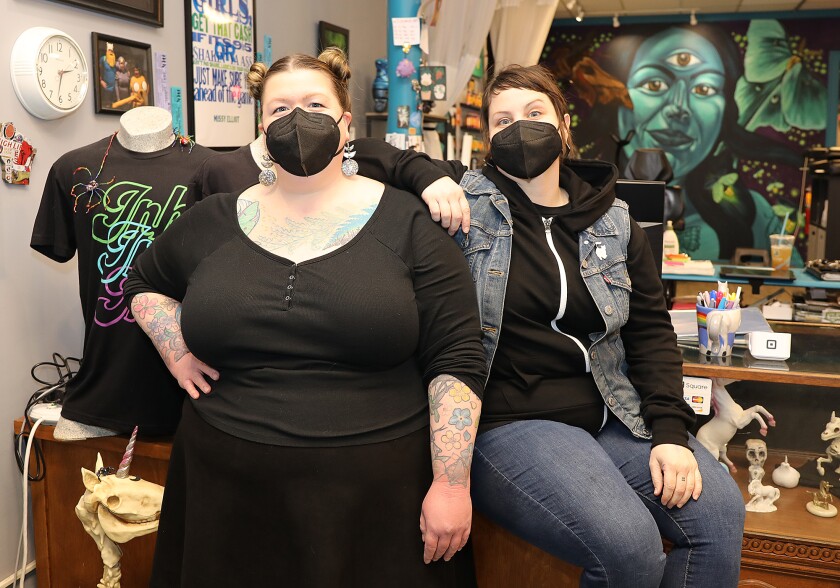
For Goodell, the latter was a welcome change to a more focused connection and experience between the artist, the client and the art. A cancer diagnosis in Korhonen’s family means tight restrictions and a spelled-out safety guideline list which customers are required to read and respond to before Korhonen will schedule them. Clients have been very supportive, Korhonen said, and many communicate gratitude with the shop’s measures.
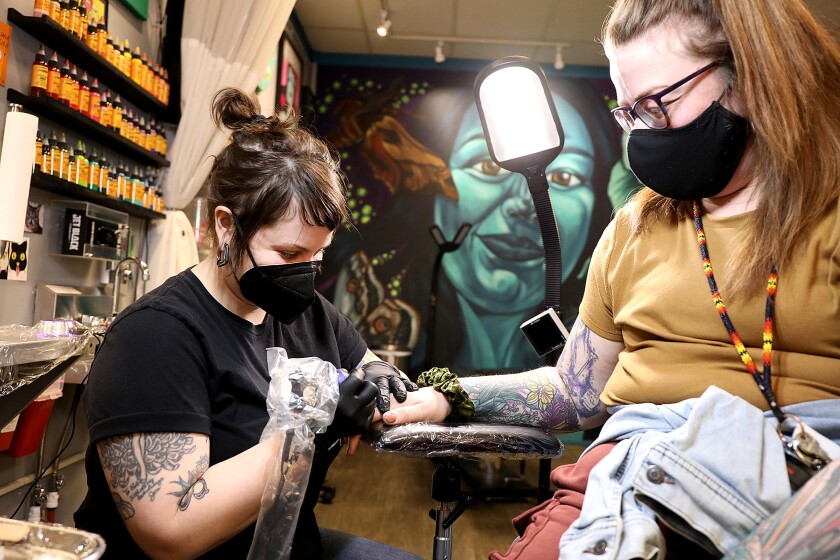
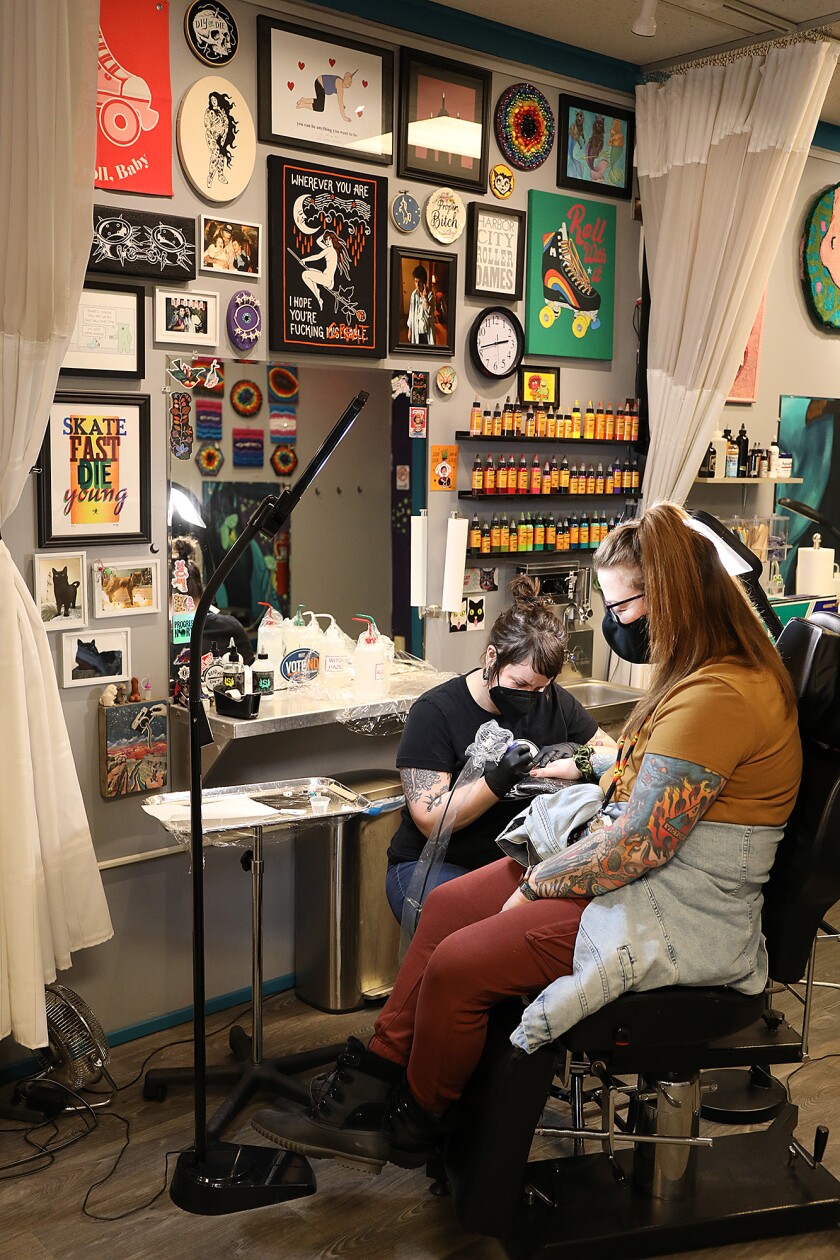
The body art industry, already abreast in the use of plastic gloves and meticulous sanitization practices, was, in a way, well-equipped for the pandemic-prompted shifts in business. But it was not immune to the effects of demand and cost.
Material costs increased for goods such as Aquaphor ointment, gloves, paper towels, cleaning supplies and Saran wrap, which they use often at the shop to cover surfaces, said Goodell. So, she and Korhone increased their prices to keep up.
More of their clients have exponentially added ink since 2020 — starting with minimal or zero pieces to completing a body-covering work of art. After two years, Korhonen recently completed Anya Russom’s back piece that spans from one shoulder to the next.
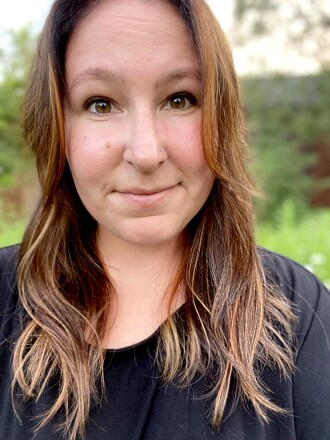
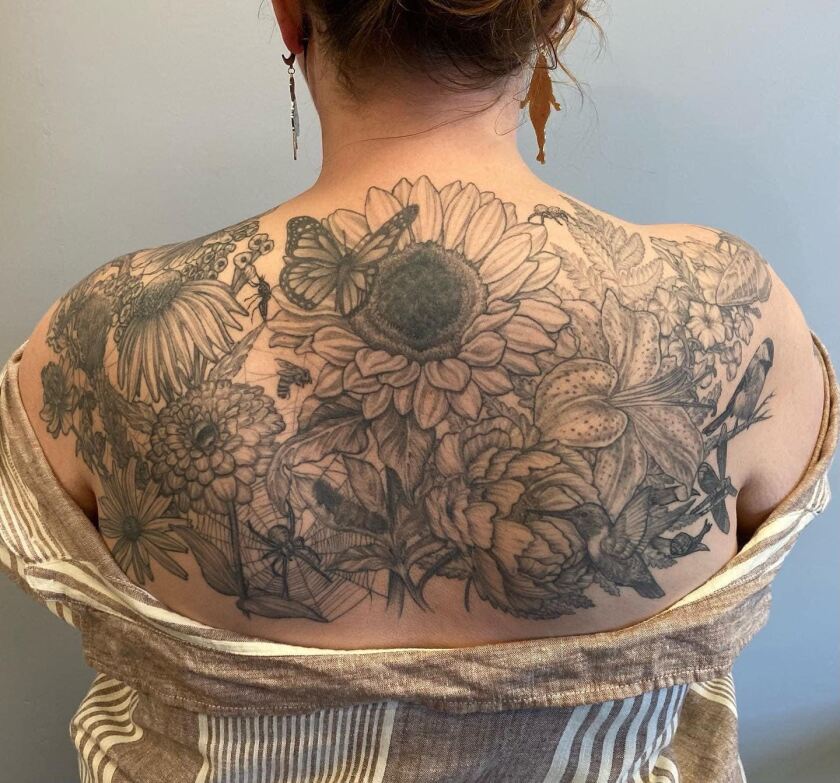
“I didn't have much going on,” Russom recalled. “I can’t travel, can’t go out, what else could I do, maybe get this tattoo.”
Russom lived with an immunocompromised family member, and through INK’s safety process, Russom and Korhonen both felt peace of mind moving forward. “I was so locked down and I hadn’t seen friends at all, I was very isolated. It was a way for me to practice self-care. It gave me something to look forward to.”

People get tattooed for different reasons, often, to work through something. It’s common in the industry to think of this as ink therapy. You’re their artist — and their confidante, said Goodell.
ADVERTISEMENT
It’s a time to really be in your body, added Korhonen.
“I think of us as healers,” Goodell said. “We help people work through personal things.”
In some cultures, tattoos are believed to have healing powers, and others value their practicality. In the 1700s, sailors tattooed their initials on their bodies for easy identification, according to .
“It’s definitely something I don’t ever see going away. It is an ancient art form,” Owen said. “We’re where therapists come for therapy.”
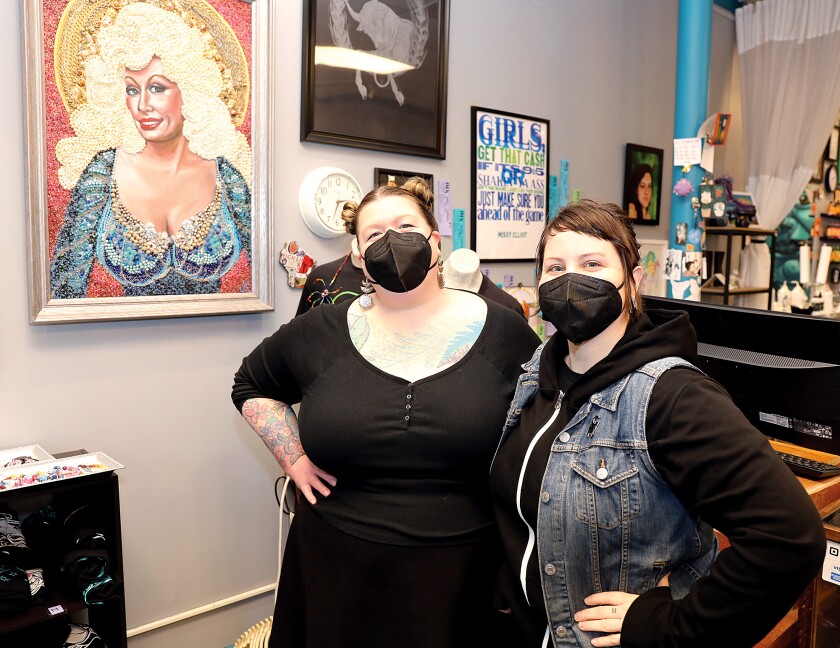
INK owners said they’ve seen tattoos help clients reclaim their bodies after a bodily trauma; they help validate identity, aid a journey of self-acceptance, and a tattoo has helped at least one client feel secure going sleeveless.
There’s trust, intimacy and a bit of surrender when someone permanently alters your body, sometimes, in interesting places, said Korhonen.
Closing down allowed Goodell a break for deeper work. The pandemic brought a lot of past trauma and mental health issues to the surface, said Goodell, who started therapy last winter.
ADVERTISEMENT
It’s helped her be a better tattooer and a better communicator, she said.
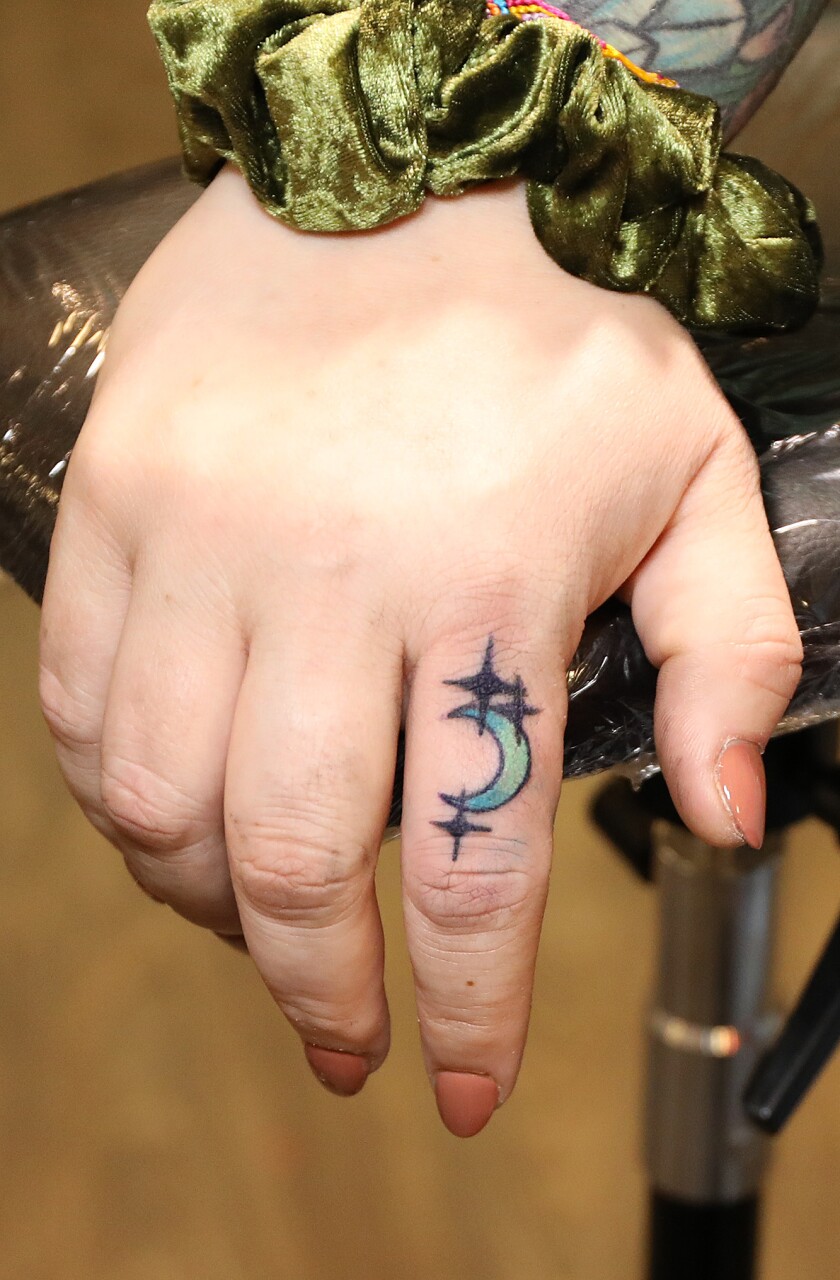
The pandemic created stress and anxiety, and it allowed more down time to deal with mental health, said Korhonen. Slowing down allowed her to hold better boundaries, to focus on family and her own self-care. They both also made time to get ink of their own.
Along with some unicorns, Korhonen finished a large chest tattoo, which she doesn’t think she would’ve had time — or courage — to finish before. “I was feeling a little braver getting something so painful done.
“I’ve been through some s--t these past two years. I can put it in perspective. I’ll be fine,” she recalled.

